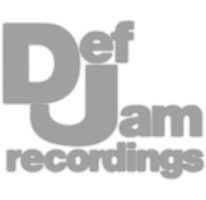Valhalla Supermassive is a free reverb plugin that offers an incredibly unique and professional sound - with functionality for both reverberation and vocal modulation. This reverb is great for both common reverberation and distinct outlandish reverb due to the warp and feedback functions, as well as the mode selector.
When limiting your master, it’s best to find a limiter that works best for the genre and you’re intended amount of attenuation. Some settings that’ll help you limit your master include a 50-millisecond release, no more than 6dB of attenuation, and use oversampling when it’s available.
In many ways, distortion can be used as a form of equalization - especially when that distortion is easily controlled and can be made frequency specific. For example, an exciter will create high order harmonics, in turn amplifying the high-frequency range - resulting in a brighter master.
Mid and Side routing is the isolation of the left and right signals into the mono or mid image and the stereo or side image. When observing the stereo image, the mid is at 0 degrees or centered and the side is at 180 degrees.
The quickest way to add some clarity to your vocal is to combine a high-pass filter with a gate tailored toward vocals. The high pass will attenuate aspects of the vocal that are causing plosives or unwanted rumble, and the gate cleans up the performance.
If you’re trying to make your digital master sound more indicative of an analog master, you need to start by considering how analog routing works. Imagine how the signal gets routed in an actual analog system, and consider each step that the signal goes through from start to finish.
Analog Obsession has been making great free plugins for a while now, and one of the latest makes for a fantastic mastering compressor. SPECOMP can be used for mixing but has particular functionality that makes it a great option for subtle but powerful mastering compression.
BPB Saturator is a free plugin that offers a great introduction into saturation - whether used on an individual instrument, bus, or full master, the harmonics it generates are complex. BPB Saturator allows you to introduce both Tape and Tube distortion as well as to attenuate the low and high-frequency range.
Although this may seem a little obvious, it helps to know that when you’re trying to perform bus compression, you need to insert the compressor on either your master output or an instrument group or stem. Bus compression always affects more than one instrument simultaneously.
Mid-side processing has become increasingly popular in audio production, especially in plugin form - but mid-side routing can also be utilized. Mid-side routing offers more flexibility and greater control of your signal’s timbre, stereo width, dynamic range, and more - making it truly helpful.
Stereo imagers are the easiest way to expand your stereo image and make your recordings sound wider - however, they also introduce the most phase cancellation. Using a dedicated stereo image plugin may be okay on an instrument but it’s best to avoid it when mastering a full mix.
Oversampling is an increasingly common function in most plugins, which increases the sampling rate of the signal it’s processing by a fixed multiple like 2 or 4. So if the sampling rate of your session is 48kHz, a 2x oversampling setting will make the sampling rate 96kHz.
Start your master using subtractive equalization. For this step, I’ll use the stock Logic Pro X equalizer, and use the linear phase option to avoid creating phase changes to the signal.
Multi-band saturation is a relatively new form of processing, but an incredibly useful one nonetheless. Essentially, it allows you to saturate individual bands of your frequency response using various forms and amounts of distortion and compression - in turn giving you a lot more control.
The easiest way to add clarity during a mastering session is to amplify the frequencies most often associated with clarity - 4kHz to 20kHz.









